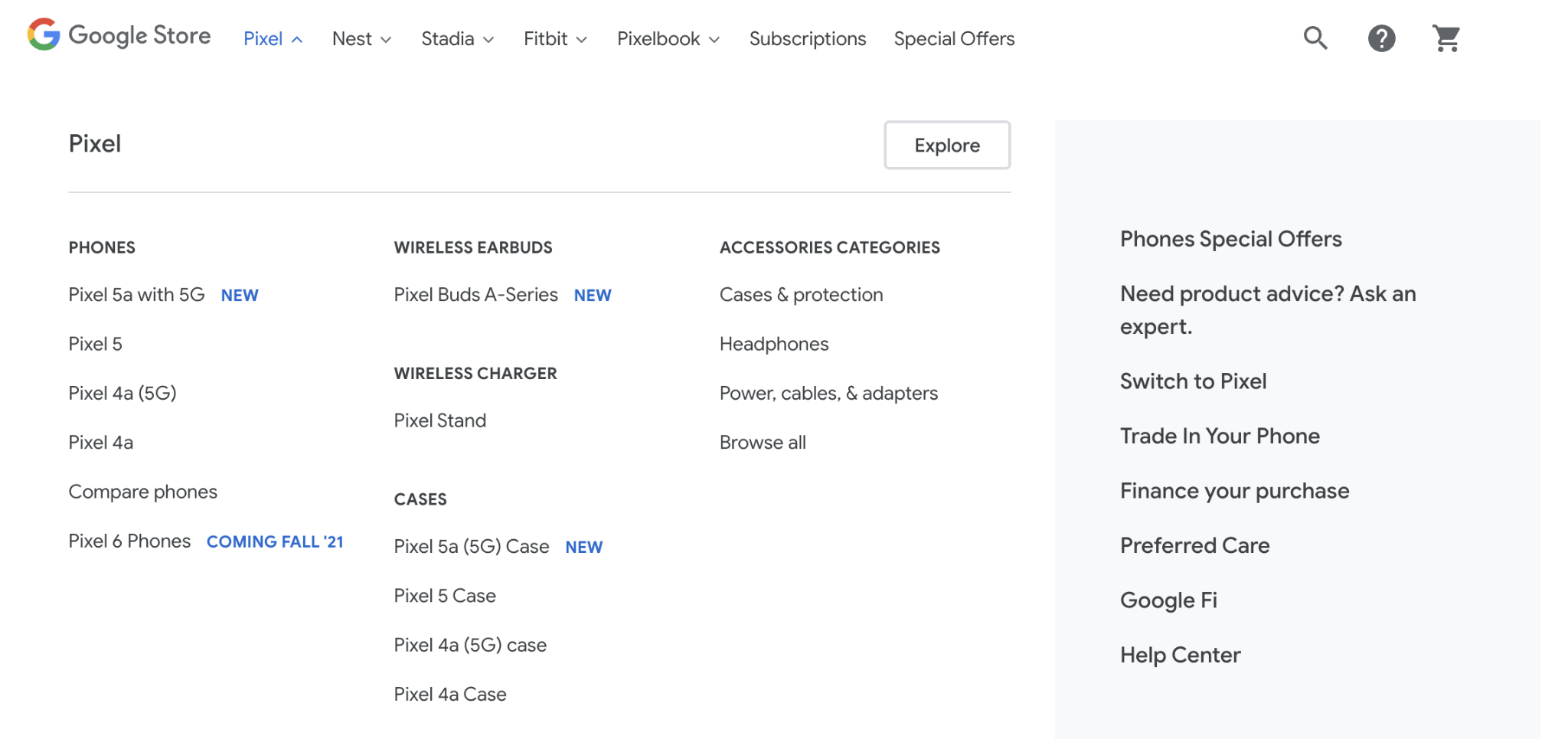帮助 Google 了解您的电子商务网站结构
Google 会尝试根据网页之间的关联来分析它们之间的关系,从而找到您网站上的最佳内容。这意味着,网站上的导航结构(例如菜单和跨页链接)可能会影响 Google 对网站结构的理解。
例如,Google 可以利用各种信息(例如访问某个网页需要跟踪的链接数量,以及指向某个网页的链接数量)来推断该网页相对于网站其余部分的重要性。如需详细了解 Google 如何确定某个网页在 Google 搜索中的重要性,请参阅 Google 搜索的运作方式。
设计便于 Google 抓取工具进行抓取的网站导航
为帮助 Google 找到您网站上的所有网页,请务必遵循电子商务网站最佳实践,并确保 Google 可以通过跟踪网站导航链接访问所有网页。 例如,添加从菜单到类别网页、从类别网页到子类别网页,以及从子类别网页到所有商品网页的链接。我们还建议您添加结构化数据,因为这样有助于 Google 了解您网站上不同网页的用途,从而强化导航结构。

如果类别网页不包含指向某类别中所有商品的直接链接,Googlebot 可能无法仅通过抓取找到您的所有商品。这些商品也许能通过搜索框找到,但无法通过类别浏览找到。Googlebot 通常不会尝试在网站抓取过程中将搜索提交至搜索框中。因此,强烈建议您链接到您希望编入索引的所有商品。如果无法链接到所有网页,请使用站点地图或 Google Merchant Center Feed。这些来源可包含抓取工具无法通过其他方式找到的网站网页链接。
为了确保 Googlebot 正确找到链接,请在创建指向其他内容的链接时使用 <a href> 标记。请不要在其他 HTML DOM 元素上使用 JavaScript 事件进行导航。如需详细了解 JavaScript 以及如何将网页内容编入索引,请参阅了解 JavaScript SEO 基础知识。
宣传最畅销的类别或商品
Google 通常不会根据网址结构来推断网站结构。但是,它会分析各网页之间的关联,从而深入了解网站上不同网页的相对重要性。一般来说,网站中指向某个网页的链接越多,该网页相对于网站上其他网页的重要性就越高。
例如,如果您有一款畅销商品,不妨考虑从首页或其他内容(例如您网站上的博文或简报)链接到该商品。这将有助于 Google 了解该商品对您网站的重要性。
说到底,Google 就是致力于帮助用户找到所需内容。电子商务 SEO 的终极最佳实践是创造对用户有价值、实用且有趣的内容。
如需了解更多信息,另请参阅管理对分面导航网址的抓取。
